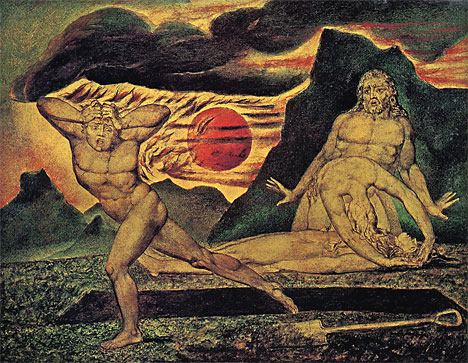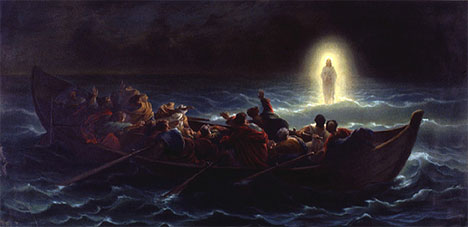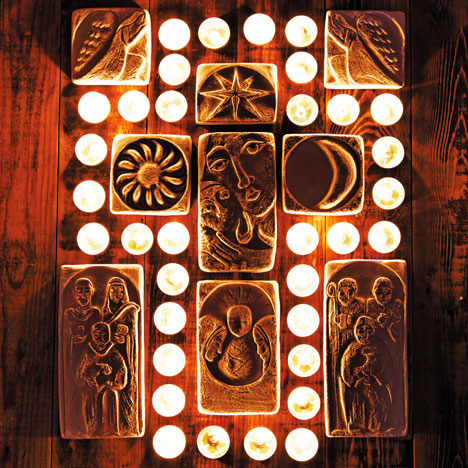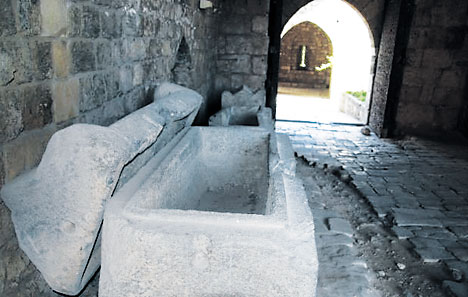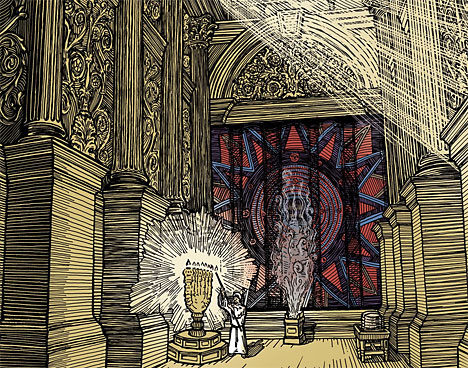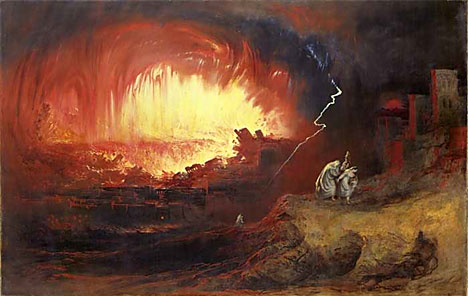Mothers and Brothers
“What is the meaning of ”one is taken and the other left’? This is commonly thought to refer to the rapture — one taken up into heaven, and the other left on earth to kick himself for not praying the sinner’s prayer when he had a chance. On the bright side, there will be a lot of free, unmanned cars available” (Heaven Misplaced, p. 104).
Matthew 24 is a prediction of the Covenant curses falling upon Judah for the last time. One being taken and the other left has to do with displacement. Titus enslaved the best Jews and took them in ships to Egypt.
“And the Lord will take you back to Egypt in ships, by the way of which I said to you, ‘You shall never see it again.’ And there you shall be offered for sale to your enemies as male and female slaves, but no one will buy you.” (Deuteronomy 28:68)
It’s one thing to get the historical fulfilment correct, but there’s a whole lot more going on here. In His speech, as the fulfilment of Israel, Jesus is working through the Bible Matrix, a combination of the Creation week, the weekly and annual Feasts, and the process of Dominion. This means that He is using examples of all the previous historical Covenant structures to make His point. The Covenant cycle has snowballed through history and picked up a lot of events on its way.
The Weight of Literary Glory
“…and they saw the God of Israel. And there was under His feet as it were a paved work of sapphire stone, and it was like the very heavens in its clarity. But on the nobles of the children of Israel He did not lay His hand.” (Exodus 24:10-11)
Well, I’ve been blustering on about art and “intuition” in generalities for about a week now. Fluffy generalities are exactly the kind of thing that annoys me about many Biblical scholars, and I reckon it annoys God, too. They never seem to get down to specifics, and He is very specific. This shows in His architecture, and also in His literary architecture. So, here, in a section of Matthew 14, is a chance for me to get specific and show you what is possible with this “killer hermeneutic.” [1]
After a brief look at the structure of this passage the other day, I thought I’d spend some more time on it. A closer analysis has revealed an even greater beauty than I expected. (I have briefly referenced the order of words in the Greek to avoid any great missteps, so it may not be perfect, but it’s close.) Much learning hath indeed made me mad but I hope you’ll take a few minutes to see this passage through my eyes.
Drinking Into One Spirit
“For by one Spirit are we all baptized into one body,
whether we be Jews or Gentiles, whether we be bond or free;
and have been all made to drink into one Spirit.” 1 Cor. 12:13
On the BH forum, Michael Jones observed:
“If you look up the words for “drinking into” lexically (Strong’s), you come up with the idea of plants being irrigated and soaking up water through the roots. Is this somewhat valid? Are we like a bunch of trees around an oasis in the desert?” [1]
I believe that very often, the word choices of the biblical writers are hints to the literary structure — especially when their word choices are a little unexpected or ambiguous. This one isn’t unexpected, but perhaps that’s because we are so familiar with this passage. It really is an odd turn of phrase. Could the Bible Matrix shed any light on it?
The Great Feast of Jesus
or Riffing on Moses
The Lord’s name might not be mentioned explicitly in the book of Esther (though some scholars see it hidden in the text), but as literature it is riddled with riffs on the patterns found in the Law and the Prophets. We don’t see it because we don’t interpret “musically,” that is, looking for recurring themes. [1]
For They Shall See God
The Literary Structure of Luke 2
God loves architecture. He starts with a Garden, moves to stone, then to flesh. Should it surprise us that the Nativity and the events surrounding it follow the same patterns as the Tabernacle and the Creation week?
The Breath of His Coming – 2
The Living Dead and the Dead Living
Creation: In part 1 we saw that the theme of the first stanza of 2 Thessalonians 2 was the “Sabbath” rest of the church. Paul writes to remove the alarm caused by the “conspiracy theorists” who attempted to disturb it.
Division: The second stanza concerned the splitting of the church into two — those who would persevere despite the growing threat of tribulation throughout the empire [1], and those who would succumb to their fears. The attacks would culminate in the completion of Herod’s Temple and the Nero’s burning of Rome in AD64. The first threw doubt upon the words of Christ concerning the Temple, and the second, though hardly believed, was an excuse to scapegoat this new Jew-Gentile sect, now legally separated from the protection afforded to Jews by Rome. The gospel tore Judaism in two. Then it united those believing Jews with Gentiles. But as in the wilderness, new Israel would be threshed and purified.
The Example of Saul
I posted this cycle in response to a comment/suggestion by Steven Opp. It’s from Totus Christus. I’ve learnt since 2009 that the texts contain much more precise structures than I was aware of at the time, but do believe this one still holds water at a general level. And speaking of water, look where Paul’s baptism occurs in the passage.
Living Stones – 3
1 Peter 2:4-10 | Sermon Notes
The Stoning of Israel
I think it’s worth looking at the literary structure of this passage. Here’s a revised version of the sheet I handed out after the sermon.
As I’ve written before, modern readers (and commentators) only look at the content of the text, but the authors of Scripture also communicate to us through where they place that content within that text, i.e. how it is arranged.


